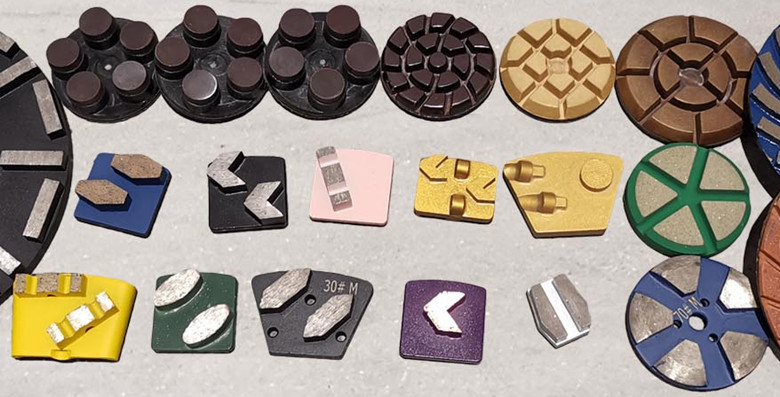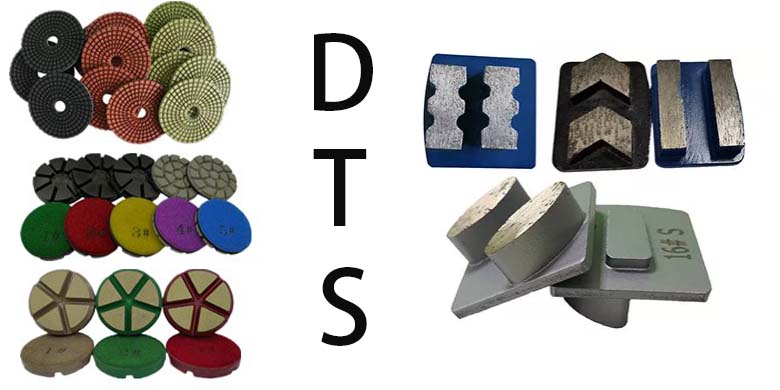Abrasive Types2022-09-14
Abrasives are tools used for grinding,
lapping and polishing. Most of the abrasives are artificial abrasives made of
abrasives and binders, and there are also natural abrasives that are directly
processed from natural ore rocks. In addition to being widely used in machinery
manufacturing and other metal processing industries, abrasive tools are also
used in food processing, paper industry and processing of non-metallic
materials such as ceramics, glass, stone, plastic, rubber, and wood.
During the use of the abrasive tool, when
the abrasive grains are blunt, due to the partial fragmentation of the abrasive
grains themselves or the fracture of the binder, the abrasive grains partially
or completely fall off from the abrasive tool, and the abrasive on the working
surface of the abrasive tool continues to appear new cuts. Cutting edge, or
constantly expose new sharp abrasive particles, so that the abrasive tool can
maintain cutting performance for a certain period of time. This self-sharpening
of the abrasive tool is a prominent feature of the abrasive tool compared with
the general tool.
According to the source of raw materials,
abrasives can be divided into two categories: natural abrasives and artificial
abrasives. The natural abrasives commonly used in the machinery industry are
only whetstone. Artificial abrasives are classified according to their basic
shapes and structural characteristics, and there are five types of grinding
wheels, grinding heads, whetstones, sand tiles (collectively referred to as
bonded abrasives) and coated abrasives. In addition, it is customary to list
abrasives as a class of abrasives.
Bonded abrasives can be divided into
ordinary abrasive bonded abrasives and superhard abrasive bonded abrasives
according to the different abrasives used. The former is made of ordinary
abrasives such as corundum and silicon carbide, and the latter is made of
superhard abrasives such as diamond and cubic boron nitride. In addition, there
are some special varieties, such as sintered corundum abrasive tools.
Ordinary abrasive bonded abrasive tool is
an abrasive tool that is consolidated into a certain shape and has a certain
strength by a bonding agent. Generally composed of abrasive, bond and pores,
these three parts are often referred to as the three elements of bonded
abrasives.
Abrasives play a cutting role in abrasive
tools. Binder is a material that consolidates loose abrasives into abrasives,
and there are two types of inorganic and organic. Inorganic binders include
ceramics, rhombohedral and sodium silicate, etc.; organic binders include
resin, rubber and shellac. Among the most commonly used are ceramic, resin and
rubber binders.
The air holes play the role of chip
containment and chip removal for grinding chips during grinding, and can
accommodate coolant, which is helpful for the dissipation of grinding heat. In
order to meet some special processing requirements, some fillers, such as
sulfur and paraffin, can also be impregnated in the pores to improve the
performance of the abrasive tool. This kind of filler, is also known as the
fourth element of the abrasive.
DTS Diamond Tools is a professional manufacturer of diamond tools for
concrete or stone floor grinding and polishing, we have supplied many different
kinds of diamond tools for many customers, such as Scanmaskin tools,
Lavina tools, Klindex tools, Husqvarna tools, HTC tools etc. Welcome
to consult for our products by clicking pictures to get into our official web
if you are interested.
- Company Info
- Feedback
- Customer Reviews
- About Us
- Contact Us
- Blog
- Help Center
- User Center
- Forget Password
- My Orders
- Tracking Order
- My Account
- Register





